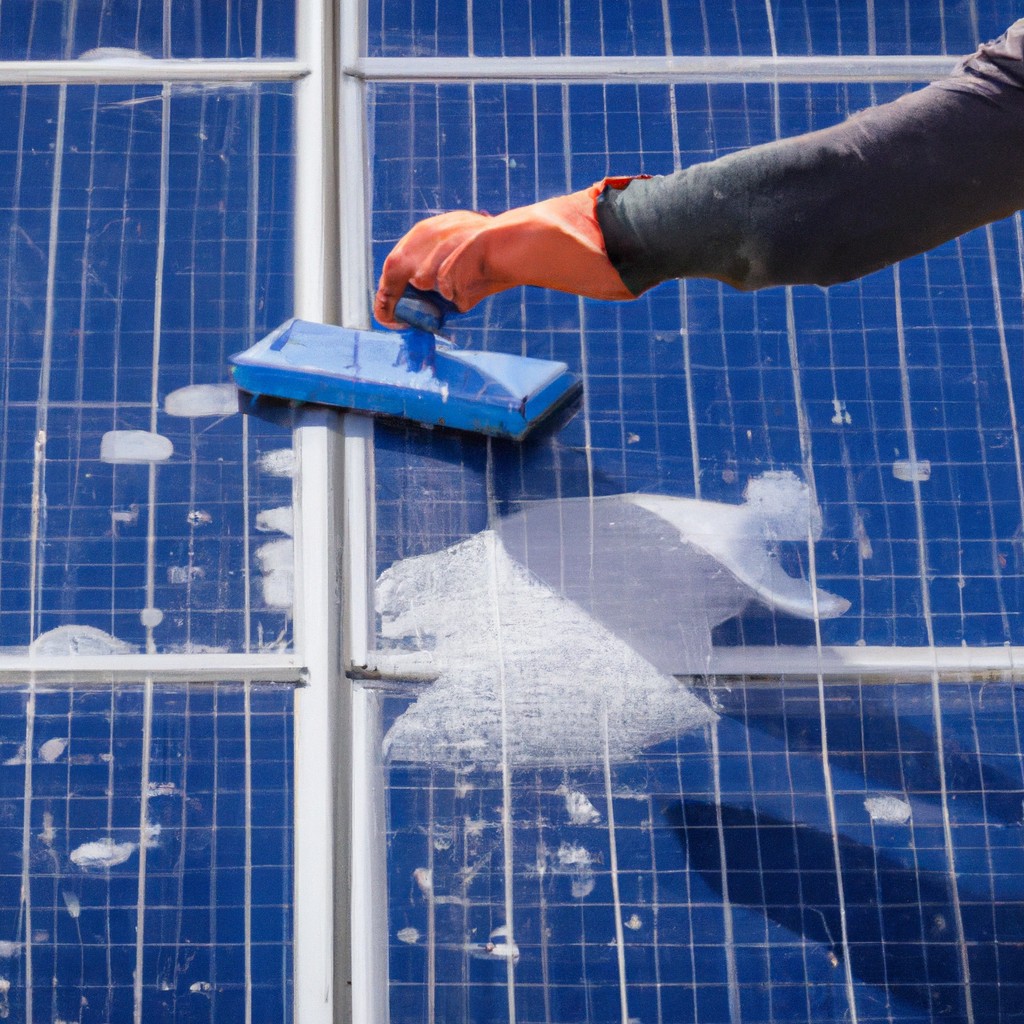Maintaining the efficiency of solar panels is crucial, and this article provides practical guidance on setting up an automatic cleaning system for solar panels installed on roofs.
Key takeaways:
- Determine optimal cleaning frequency based on power output, environmental conditions, and visual inspections.
- Automated cleaning systems maintain panel efficiency without manual intervention.
- Benefits of automated systems: consistent cleaning, reduced labor costs, customization, and integration with existing setups.
- Consider environmental conditions, roof inclination, and panel arrangement when selecting an automated cleaning system.
- Invest in an automated system for long-term savings, improved performance, reduced maintenance costs, and extended panel lifespan.
How to Gauge When It’s Time to Clean Solar Panels

Determining the optimal frequency for cleaning your rooftop solar panels hinges on several factors. Monitor power output to notice drops that may signal the need for a clean. Environmental conditions, such as dusty areas or regions with frequent bird droppings, also dictate the cleaning schedule. Seasonal considerations, like pollen in the spring or leaves in the fall, should not be overlooked. Finally, visual inspections can help identify a layer of dirt or debris that could be impeding solar efficiency. A regular cleaning routine, aligned with these observations, will ensure peak solar panel performance.
Automated Cleaning Systems
Automated cleaning systems for solar panels are designed to maintain optimal panel efficiency without manual intervention. They often include a set of robotic cleaners or sprinkler-like nozzles that move across the panel surfaces, propelled by motors. These systems are programmed to operate during specific times to avoid disrupting the panels’ energy production. By using sensors, these systems can detect dust accumulation and initiate a cleaning cycle as needed.
Benefits of automated systems include:
- Consistent cleaning schedules, ensuring peak solar panel performance.
- Reduction in labor costs and the risk associated with manual rooftop cleaning.
- Customizability to cater to different climates and environments, providing adaptability in areas with high dust or frequent bird droppings.
- Integration with existing solar panel setups, allowing for retrofitting on most existing installations.
Key features may comprise:
- Soft microfiber or nylon brushes to prevent scratching the panels’ surface.
- Water-efficient technologies that utilize minimal water, such as a drip or mist system.
- Smart control options for remote management and scheduling via smartphone apps or integrated solar panel monitoring systems.
When selecting an automated cleaning system, consider the environmental conditions, roof inclination, and panel arrangement to ensure compatibility and effectiveness in keeping the solar panels dirt-free and functioning at their best.
Cost and Efficiency
Investing in an automated cleaning system for solar panels typically involves an upfront cost that varies depending on the system’s complexity and the size of the solar array. However, it’s important to evaluate this cost against the potential long-term savings. Cleaner solar panels operate more efficiently, which means they generate more electricity. This increased output can lead to considerable savings on energy bills over time.
Moreover, automated systems reduce the need for manual labor, cutting down on the expense and inconvenience of regular professional cleanings. They also decrease the risk of damage to panels from incorrect cleaning methods. With the aspect of efficiency, these systems are designed to use minimal water and energy to perform the cleaning process, often incorporating smart technology to clean at optimal times for the best results.
Overall, while the initial investment may seem substantial, the combination of improved solar panel performance, reduced maintenance costs, and the extended lifespan of the panels often makes automated cleaning a cost-effective choice for maintaining solar panel efficiency.
Step-by-step Guide for Setting Up an Automated Cleaning System
Begin with selecting the appropriate automated cleaning system that fits your solar panel specifications and your roof’s layout. Manufacturers often provide guidelines for compatibility.
Schedule a professional installer to assess your roof and ensure a safe, optimal setup. These systems generally require specialized knowledge for proper installation.
Once the system is on-site, installation starts by mounting the cleaning unit to the solar panel frame. This process should not disrupt the panel’s function or warranty.
Connect the water supply to the automated system. This may involve integrating into existing plumbing or setting up a dedicated water source.
Incorporate the control mechanism — typically an automated system can work on a timer or be controlled remotely. Configure the settings according to manufacturer recommendations and your personal cleaning needs.
Test the automated cleaning system to confirm it covers the entire surface of the panels and operates smoothly without causing damage.
Finally, set up a maintenance schedule for the system itself. Regular checks will ensure hoses, nozzles, and mechanical parts remain in good working condition for optimal performance.
Eco-friendly Cleaning Solutions Compatible With Automated Systems
Selecting the right cleaning solution is crucial to maintaining the performance and longevity of your solar panels when using automated cleaning systems. Here are some points to consider:
1. Biodegradable Soaps: Look for soaps that break down naturally and don’t harm plant life or the local water supply. This helps protect the environment surrounding your home.
2. Detergent-Free Options: Some systems utilize microfiber or other materials that clean effectively without the need for harsh chemicals, reducing the ecological impact.
3. Deionized Water Systems: Automated systems that use deionized water can avoid the mineral buildup that tap water may cause, promoting a spotless finish without the use of chemicals.
4. pH-Neutral Cleaners: These cleaners are effective at removing dirt and grime without damaging the protective coatings on solar panels or disrupting the local ecosystem.
When selecting a cleaning solution, confirm it is designed for use in automated systems and check its compatibility with your specific setup to ensure the best results.




